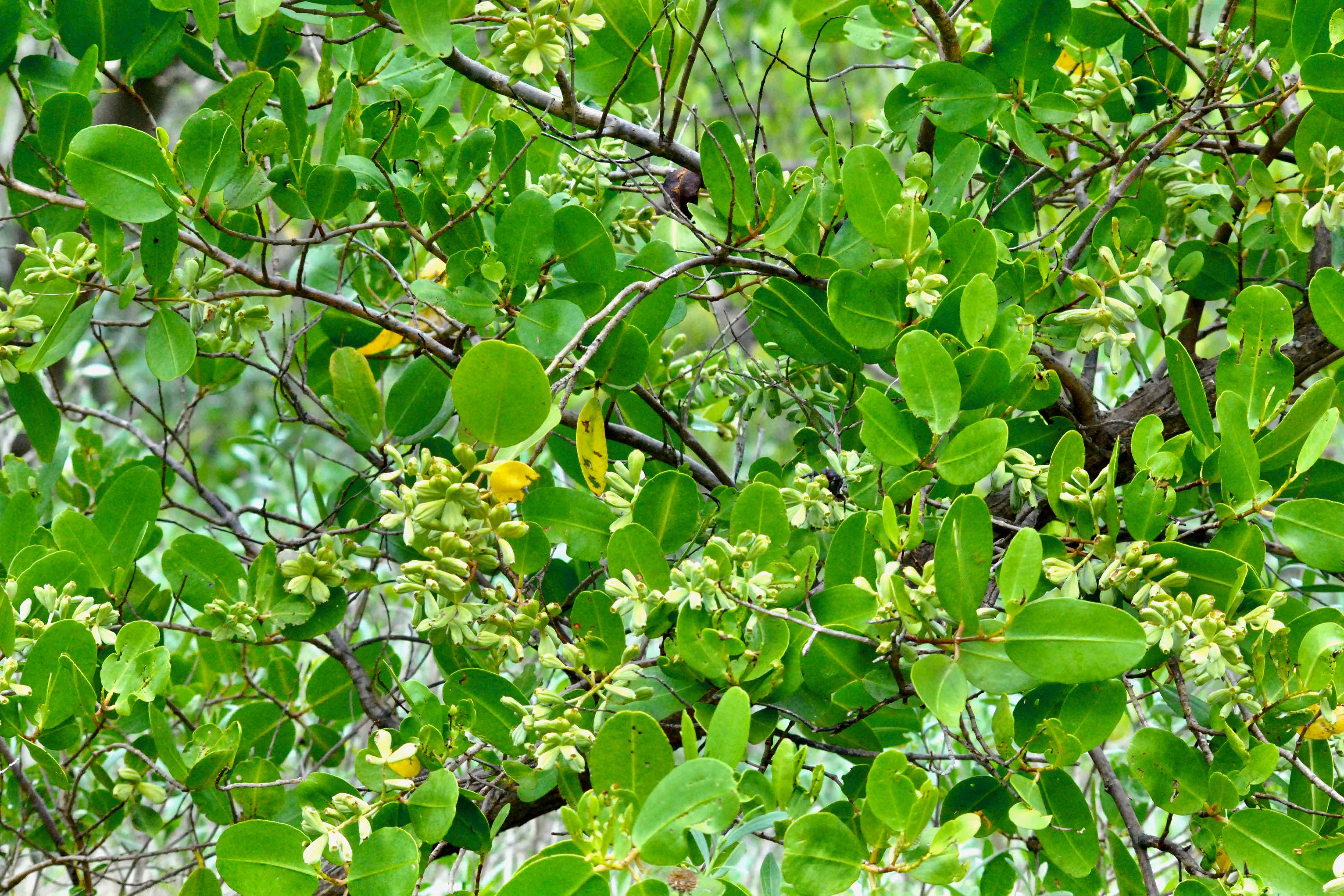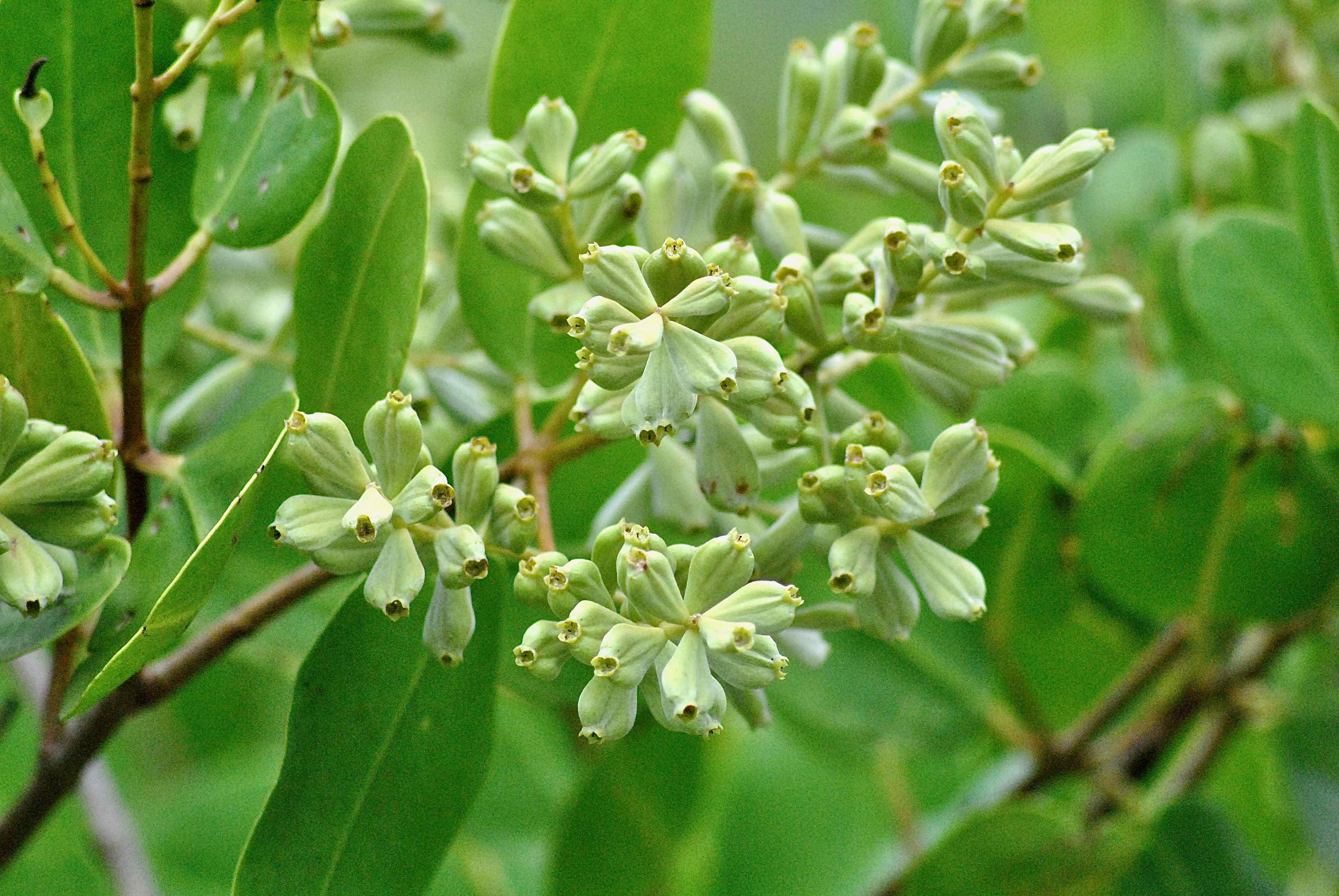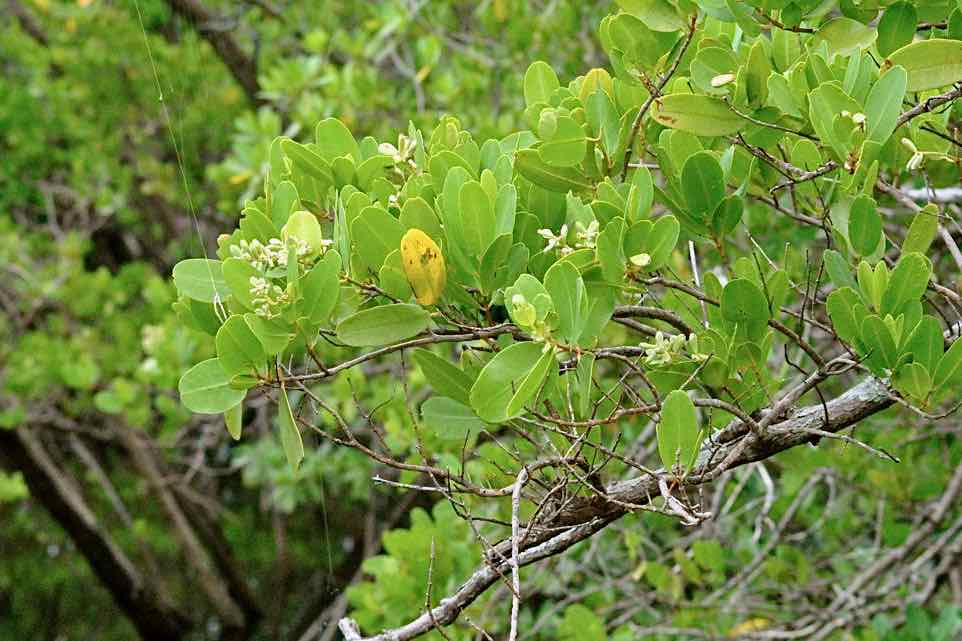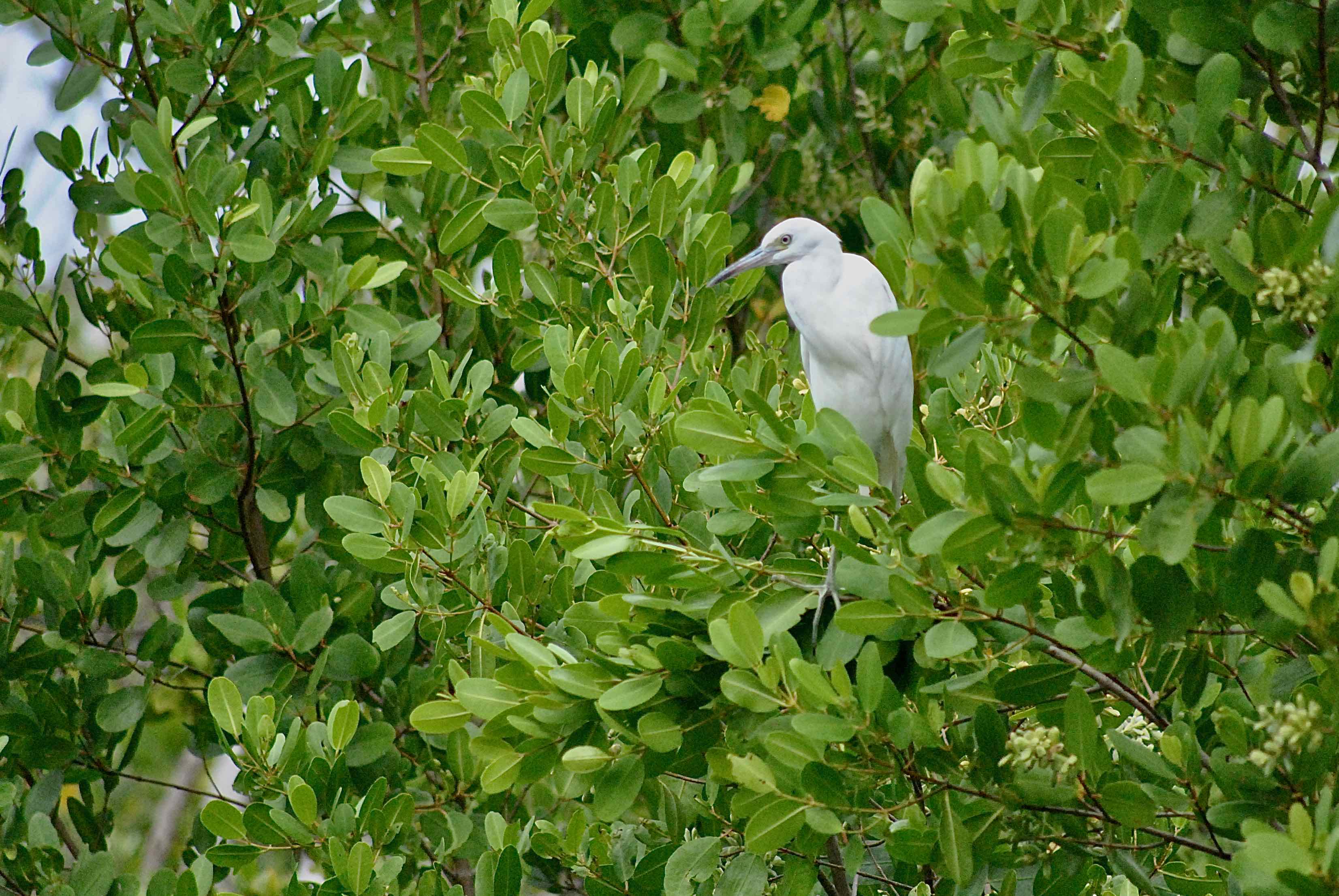
White mangrove, photographed at Ocean Ridge Natural Area, Ocean Ridge, Palm Beach County, in September 2013.
The thing to know about Florida's three mangrove species is that they tend to stratify into zones. Red Mangroves, the walking tree, are the farthest out into the water. Blacks are the middling mangrove, while our guy, white mangrove, Laguncularia racemosa, is the most upland of the three.
Like the red and the black, the white mangrove plays an important role – several roles, really — in the coastal ecosystems of Florida. It provides food and shelter for crabs, snails and bugs, a nursery of sorts for the offspring of myriad fish species, including gamefish, and it helps protect the shoreline from the effects of storm surge. Whites also provide safe nesting places for many birds to raise their young.
Whites lack the prop roots that distinguish red mangroves or the root-like stubs called pneumataphores of black mangroves. They do have two glands at the base of each leaf that excrete excess salt.
Like other mangroves, whites can be shrubby or quite tall, though most fall in between. They can top out reportedly at 65 feet, but most go 15 to 30. The leaves are thick and leathery, dark green above, lighter underneath, one to three inches long. The apex, or tip, can be rounded or have a slight notch.
The flowers are greenish white and bloom all year long, though more in spring and summer than at other times during the year. In turn, they produce a red fruit and a seed that begins to sprout while still on the tree, just like reds and blacks.
The scientific name means little flask, apparently in reference to the shape of the tree's seeds. White mangroves are not very cold tolerant; their native range includes Florida as far north as the Ponce de Leon Inlet in Volusia County on the Atlantic Coast and Levy County on the Gulf Coast.
Whites also range through the Caribbean, Central and South America and West Africa.
Like reds and blacks, white mangroves have high concentrations of tannins, and like reds and blacks, the bark and leaves of the whites have been harvested for making dyes and processing leathers. At one point in the 1960s, Brazil harvested 1.5 million kilograms of mangrove leaves annually for use in industry. That's largely been replaced by synthetics.
White mangrove wood is dense, making it useful for making charcoal. It's also termite resistent making it particularly desirable for construction.
The high levels of tannin also make white mangroves important in traditional medicine. The bark in particular has been used to treat dysentery, fevers, wounds, ulcers, scurvy and to prevent tumors.
White mangrove is a member of Combretaceae, the white mangrove family.
Click on photo for larger image
U.S. Department of Agriculture Distribution Maps
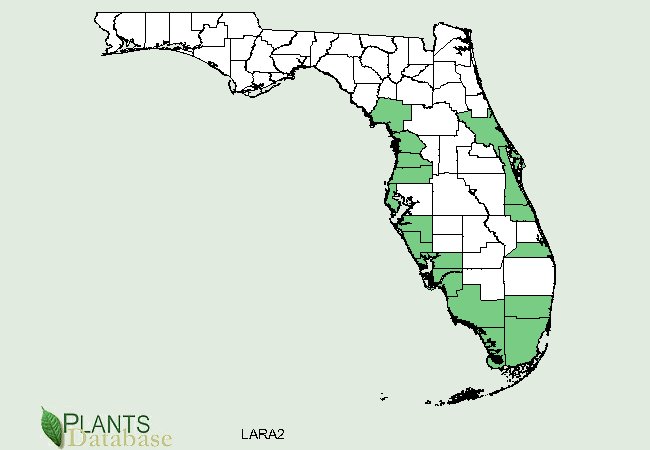

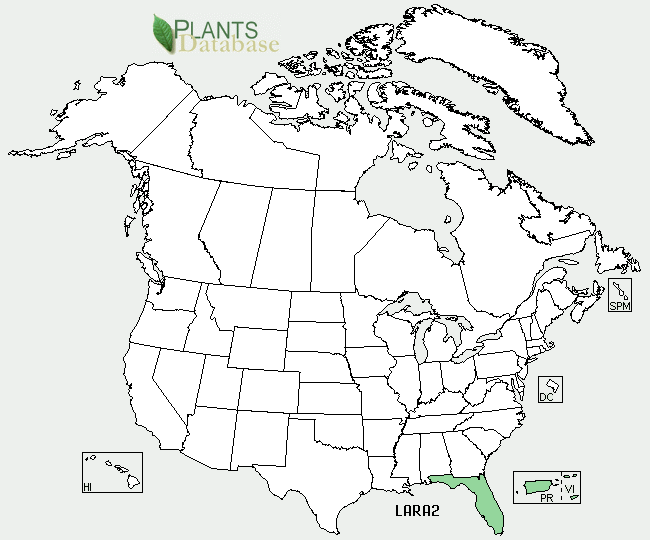
Links for White Mangrove

